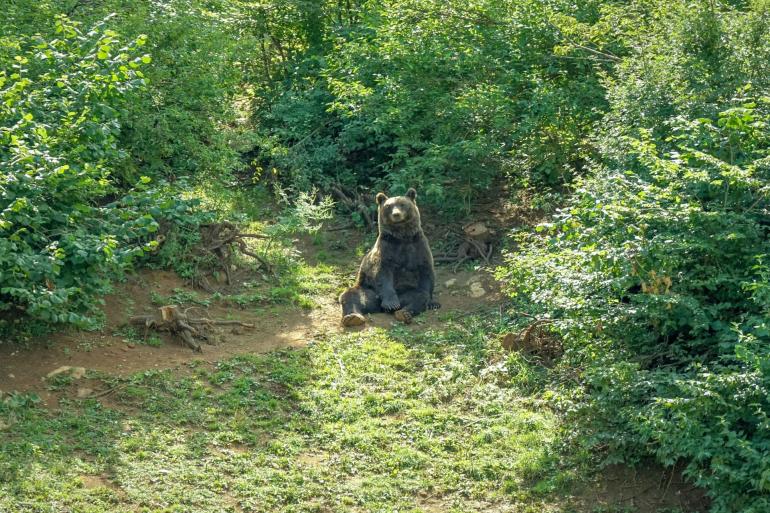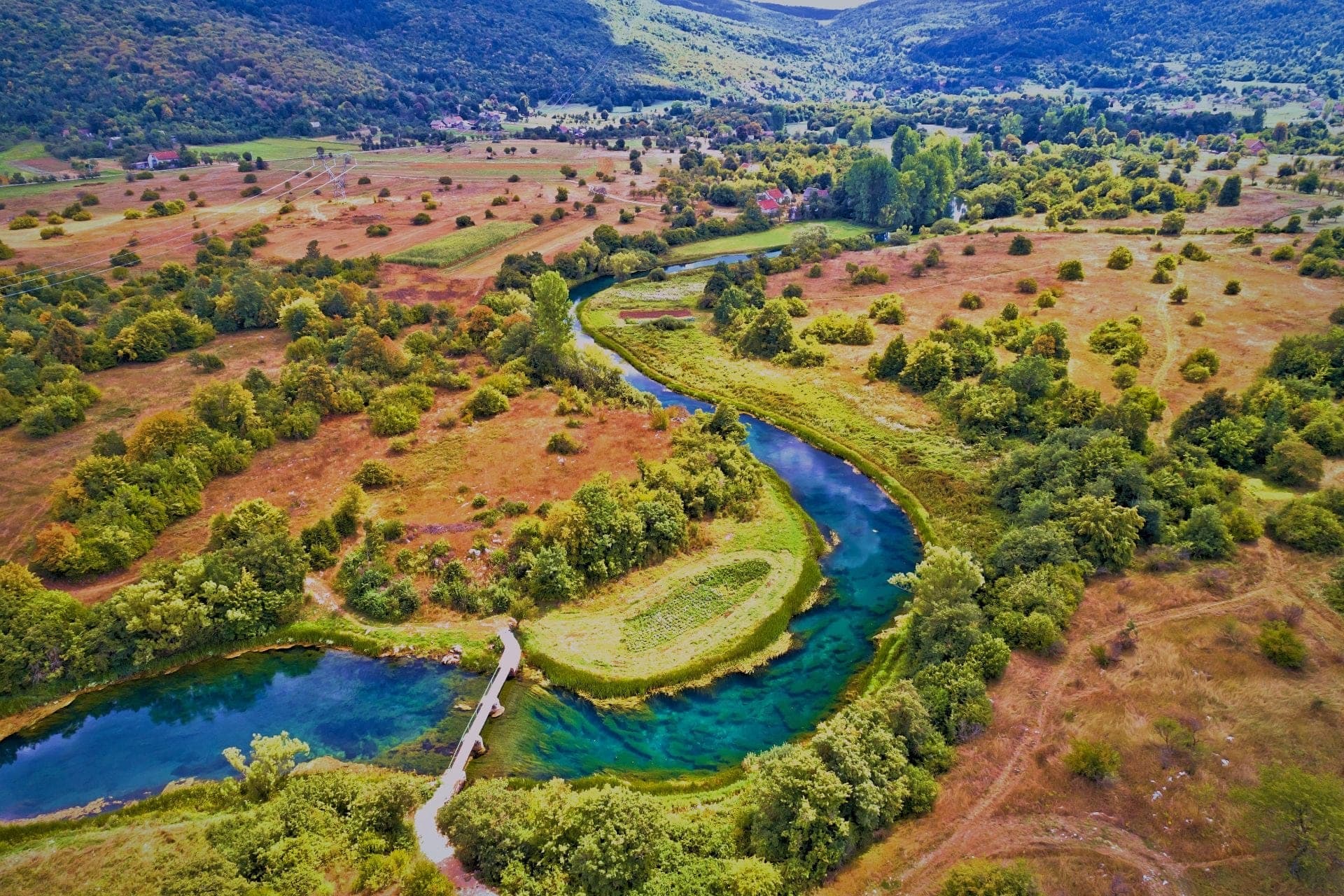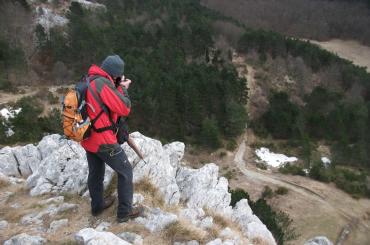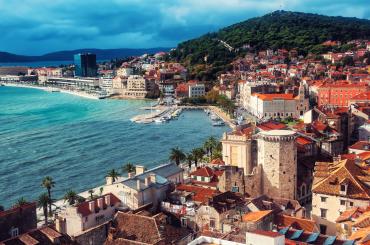More than half of Americans (58%) are planning to travel between May and September 2020, as long as their destinations aren't in quarantine. But they're being careful. A quarter of participants will try to avoid big cities and public transportation, and 21% will choose domestic travel, according to the survey conducted by LuggageHero.
With its forests Lika region of Croatia is just what you might dream about; a real paradise for anyone who loves quiet and tranquillity, a relaxing vacation. It is a place where a city man can satisfy his real curiosity, a thing he always longed for. Lika is easy to access from cities on the Croatian coast of Adriatic, as well as from Zagreb, the Croatian capital.
It is the largest yet most sparsely populated part of Croatia. Here are some things you might enjoy about Lika.
 Photo: guruXOX
Photo: guruXOXThe locals favour “šljivovica“, a brandy made from home-grown plums
#1 The favorite local brandy - šljivovica
You will notice a change in the scenery as you reach the city of Karlovac, some 50 km south of Zagreb, with the fertile plains of Continental Croatia transforming into a karst realm, where the slowly dissolving limestone creates amazing shapes, gives the rivers a turquoise hue and forms cascade waterfalls. The Plitvice Lakes, the most frequently visited national park in Croatia, are just an hour’s drive from Karlovac, while Mount Velebit is the most interesting hikers’ destination in the country.
Velebit stretches along 140 km of coast and keeps the inland Lika plateau away from the Mediterranean climate. Lika is a deep continental region, with snowy winters and cool summers, while the temperatures on the coast reach 40 °C.
Mount Velebit is the most interesting hikers’ destination in the country, but is also known for great food and alcoholic drinks
When you arrive in Lika, visit the Nikola Tesla Memorial Centre in the scientist's hometown or the bear sanctuary near Otočac and discover the romantic water world of the village of Rastoke. The best way to explore the entire region is by bike.
Lika is famous for its trout and cheese – especially “škripavac“, a young cheese that squeaks between your teeth. The area is especially suitable for growing potatoes, which is why “Lika potatoes“ are a Croatian brand just like “Ogulin sauerkraut“. Lika is one of the few regions in Croatia that don't have any vineyards, which is why when it comes to alcoholic drinks, the locals favour “šljivovica“, a brandy made from home-grown plums, which is definitely an apt choice considering the harsh climate.
 Photo: Brch
Photo: BrchRastoke, one of the most romantic places in Croatia known for watermills
#2 The Rastoke water world
A small river runs between the wooden houses scattered across the green plateau, which spans an area equivalent to ten soccer pitches. The barely visible slant of this green shelf has transformed the river flow into a lacy fan of numerous streams, rapids and cascade waterfalls. At the bottom of the green shelf, the rapids spill over a 20 m high cliff. Houses and yards traverse the rapids with the aid of footbridges and platforms. This is Rastoke, a magical water world in the town of Slunj, located between Zagreb and Plitvice.
Rastoke is one of the most romantic places in Croatia, though its origins are quite pragmatic as this was the perfect location for erecting watermills and washing raw wool. Several water mills are still operational today – to honour a time-old tradition, of course – while most of the 30 or so houses in Rastoke share this beautiful spot with the visitors: here we have restaurants, cafés and apartments. Sightseeing is free of charge in one part of the village, while a symbolic admission fee is charged for the other.
At the bottom of the green shelf, the rapids spill over a 20 m high cliff
Today, Rastoke is a suburb of Slunj. It lies near the Slunjčica River mouth, where it flows into the Korana River, which flows past on its way from the Plitvice Lakes. A few hundred meters upstream of Rastoke, an old castle on an inaccessible gorge rises above a small beach on the Korana River.
 Photo: Brch
Photo: BrchUsually it takse four hours and around eight kilometers to walk through the Plitvice Lakes National Park
#3 The Plitvice Lakes National Park
If the water nymphs imagined their perfect world, it would probably look something like the Plitvice Lakes. This complex system of small and large lakes, rapids, waterfalls and cascades is impossible to describe without overusing adjectives, so we'll just stick to the facts. The colour of the water in sunny weather really is turquoise or azure; this is not a result of retouching. There are a total of 16 lakes, but the number of waterfalls is impossible to determine since the barriers are constantly shifting. The beech and fir forests are a natural old-growth woodland, while bears and other large carnivores roam the area.
No trip to Croatia is complete without a visit to the Plitvice Lakes. The usual tour lasts approximately 4 hours, during which you will need to walk 8 kilometres in a slower tempo, so it would be wise to wear comfortable shoes. Plitvice is stunning regardless of the time of year, even in winter - just imagine all those waterfalls covered in ice! The best time to visit Plitvice is in the spring and autumn because the national park is swarming with visitors in the summer. Still, even at its most crowded, the Plitvice Lakes National Park is definitely worth the visit!
The colour of the water in sunny weather really is turquoise or azure; this is not a result of retouching
The Plitvice Lakes is the oldest national park in Croatia, declared as such in 1949. It has been inscribed on the UNESCO World Heritage List in 1979, shortly after its inception.
The barriers that form the cascade waterfalls are made of travertine, which is a type of soft sedimentary rock formed by the sedimentation of the minerals dissolved in water. The sedimentation occurs in places where the water splashes slightly and where there are enough plants for the minerals to cling to. So, the barriers constantly grow slowly. The minerals in the water come from the slowly dissolving limestone, the dominant material of the Croatian mountains. These minerals are what gives the water its turquoise hue. A similar barrier formation process occurs elsewhere in Croatia – at the waterfalls of the Krka River, on the Zrmanja River, in Rastoke… The nymphs must have had something to do with it.
#4 Senj and the foot of Velebit
A solitary fortress stands on a hill south of Senj, a town on the sparsely populated part of the coast at the foot of Mount Velebit, the largest mountain in Croatia. The fortress in question is Nehaj, a symbol of Croatian resistance against the Ottoman Empire. The entire area is, in fact, quite isolated: Velebit rises steeply from the coast and its windblown slopes – the whole 140 km length of them - leaveing little living space. Towns such as Senj and Karlobag are centennial trading towns situated at the foot of mountain passes and along the roads leading towards the mainland. The Velebit Littoral has a crystal-clear sea and wild nature in the hinterland to offer modern visitors.
The medieval streets of Senj especially come alive at the beginning of August during the crazy summer carnival, which has been taking place in the town for the past 50 years. You should definitely visit the Nehaj Fortress and then head to the small town of Jablanac and the nearby protected area of Zavratnica, a very narrow cove almost one kilometre long.
The Velebit littoral has a crystal-clear sea and wild nature in the hinterland to offer modern visitors
Overlooking Senj is the Vratnik mountain pass, the shortest route to northern Lika plain inland. The Alan mountain pass, a favourite spot for hikers and nature lovers, overlooks the town of Karlobag, south of Senj. A mountain cabin is located here, which serves as a point of departure for hiking trails in the surrounding area. In addition to the stunning views of the sea and the island of Pag, the area is crisscrossed with hiking trails. The most interesting one is the easy, albeit long, Premužić Trail that leads to the Northern Velebit National Park, which was constructed almost a hundred years ago.
If you take the road further inland, to the town of Gospić, make sure you visit Smiljan, the birthplace of the inventor Nikola Tesla, where an interesting visitors' centre is located.
#5 Smiljan – the birthplace of Nikola Tesla
A million volts course through the air without a wire. You're holding a neon lamp, also without a wire. And it shines bright, needless to say, without a wire! This isn't science fiction, this is a demonstration of the Tesla coil, a patented transformer that was invented by the great Nikola Tesla and is now displayed in Smiljan, a village near Gospić in the Zadar hinterland.
The Tesla coil is just one of many exhibits at the “Nikola Tesla Memorial Centre“ in Smiljan, where the inventor was born. Another exhibit is “Tesla's Egg of Columbus“, which the inventor displayed at the 1893 World's Columbian Exposition in Chicago.
There are plenty of cycling routes near the house of the great inventor Nikola Tesla
This is a metal egg that stands on end in a rotating magnetic field, which Tesla used to perform the feat of Columbus without cracking the egg. In addition to many other Tesla's patents that are on display in Smiljan, you will find out everything there is to know about the life of the famed scientist.
Visit the nearby Grabovača cave park, especially the show cave Samograd , accessible without any equipment or experience, which isn't the case with the other 20 or so caves and grottos. The cave park also has a number of interesting educational trails, where you can learn more about the natural features and how people used to live. Also, there are plenty of cycling routes.
You can continue exploring this part of the mainland by heading north towards the towns of Ogulin and Otočac or south towards the magnificent Knin Fortress .
#6 The Northern Velebit National Park
The Premužić Trail, which begins in the Northern Velebit National Park, is the most beautiful hiking trail in Croatia, bar none. It was built in 1930 as a trail for visitors so it passes through the most beautiful parts of the majestic Mount Velebit and provides access to areas that would otherwise have been inaccessible. And best of all, there are no steep inclines, which makes it suitable for most hikers.
The trail is 57 km long and a tour of the first and most popular part, 16 km long, takes approximately nine hours. The trail begins at Zavižan, one of the northern peaks of Velebit, where a charming mountain cabin is located. The friendly host at the cabin always has a cup of hot tea or a glass of “rakija“, or brandy, ready for guests.
Numerous trails, clearly indicated by hiking markings, pass through the broken limestone of the karst terrain
Velebit’s 140 km stretch along the coast and its peaks offer breath-taking views of the sea and islands. Velebit used to be the domain of shepherds who would move their livestock up to the higher pastures with each new season. You won't find shepherds here anymore, but hikers have taken their place. Numerous trails, clearly indicated by hiking markings, pass through the broken limestone of the karst terrain.
Apart from the Premužić Trail, the Northern Velebit National Park offers a number of other hiking trails of varying degrees of difficulty. There are a few educational trails and the best way to learn about the flora is to visit the Velebit Botanical Garden and the nearby botanical reservation. As a high mountain range, Velebit is teeming with endemic plants, which are glacial relics left isolated after the last Ice Age. You will also stumble upon the occasional alpine plant, however, such as delicate edelweiss.
The entire area of Velebit is a protected nature park and the Paklenica National Park is located on its south side. The hiking trails in Croatia are clearly indicated by hiking markings (a red circle with a white centre), however it would be best if you visit the mountain with a guide or equipped with a map or GPS navigation device.
 Photo: Lucas Granger
Photo: Lucas GrangerThe Kuterevo bear refuge is only a half-hour drive from Otočac
#7 Ogulin, Otočac and the bear refuge
Nature lovers frequently visit Ogulin and Otočac, two towns in Lika, a large area in the hinterland of Velebit. Otočac is in the heart of the Gacka River valley and is a true paradise for anglers, especially if they are after the clever autochthonous trout. Ogulin is an old hiker destination – it was the departure point for nearby Mount Klek, a legendary climbing destination.
A notable landmark in the Otočac area is the small sports airport, where several old military planes are displayed, the most interesting of which is an American DC-3. The whole area is suitable for cycling.
Orphan bears have a permanent home in the large enclosed spaces of Kuterevo
The Kuterevo bear refuge is only a half-hour drive from Otočac. Bear cubs can't survive without their mothers, of course, but if they are raised by humans, they can't return to nature either because they would cause too much damage around villages, that are usually avoided by wild bears. This is why these little orphans have a permanent home in the large enclosed spaces of Kuterevo. Visits are possible from spring until autumn when the bears are up and about.
A stunning fortress with a small museum can be found in Ogulin, 40 km north of Otočac. The museum displays a permanent exhibition on hiking and has a memorial room dedicated to Ivana Brlić-Mažuranić, a popular Croatian fantasy author. A large river disappears underground at the base of a nearby cliff. Some of the oldest mountaineering trails lead to the summit of Mount Klek, which is the main reason why a hiking museum was opened here.
 Photo: NikolaR
Photo: NikolaRFortress of the city of Karlovac, citi that lies on four rivers
#8 Karlovac and the four rivers
Karlovac – the town of four rivers, says the motto of this historical town some 50 kilometres south of Zagreb. Karlovac was founded in the 16th century, and it grew inside the fortification system shaped like a six-pointed star, with a street grid designed at right angles. The four rivers that meet at Karlovac offer plenty of swimming spots and rafting routes.
The 13th-century Dubovac Castle near Karlovac has been spruced up and is open to visitors
The most frequently visited beach in Karlovac is “Foginovo“ on the Korana River, which reaches the city from the Plitvice Lakes. The Mrežnica River offers a few excellent swimming and camping locations near Karlovac and much like the Dobra River, it is also a great rafting destination. The Kupa is the only river that continues to flow onwards from Karlovac.
The whole area is suitable for cycling. The 13th-century Dubovac Castle near Karlovac has been spruced up and is open to visitors. There are a couple of other castles in the surrounding area as well, such as Ozalj Castle, while the Plitvice Lakes are less than an hour‘s drive from Karlovac by car.




